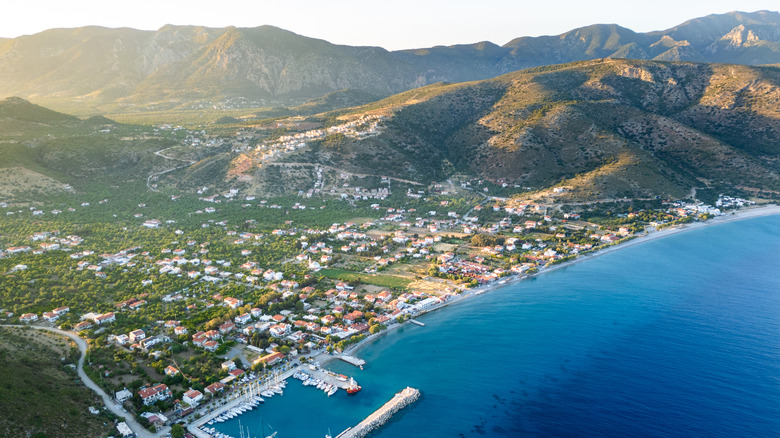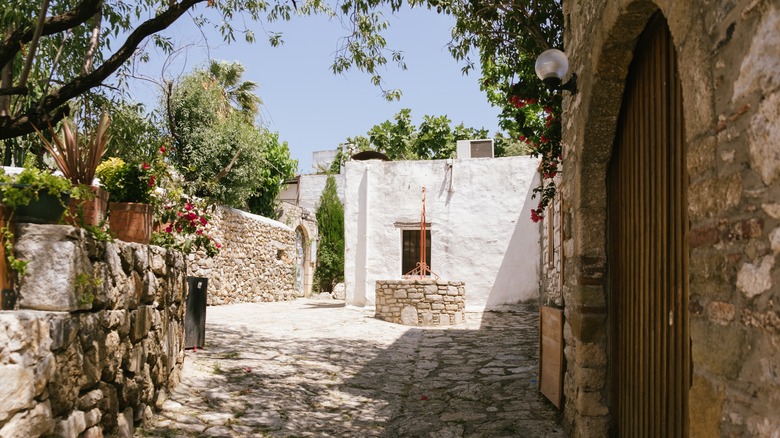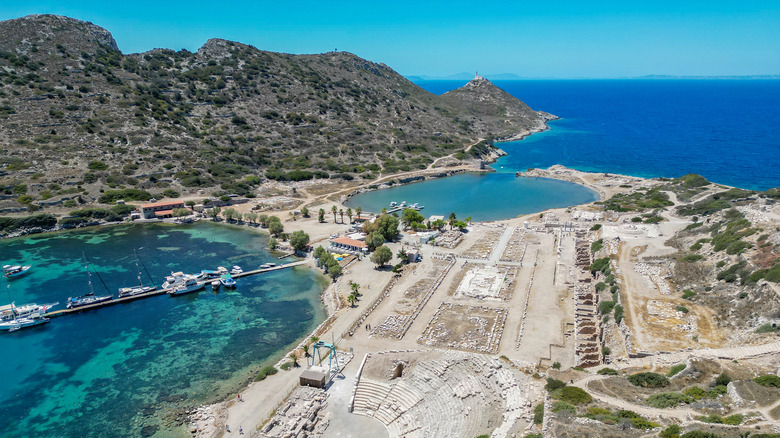For Amalfi Coast Views At A Low Price, Head To This Overlooked Destination In Turkey
Italy's Amalfi Coast was designated a UNESCO World Heritage site in 1997, and it's not difficult to see why. The idea of "la dolce vita" — living a life of beauty and pleasure through good food, drink, the sun, and the sea — is so infused with the geography and culture of southern Italy that, in 1960, it inspired a film of the same name by Federico Fellini that many critics laud as one of the greatest films ever made.
But all that cultural gravity means the region sees wave after wave of tourists in summer (up to 5 million a year, according to Euronews), and prices in the area reflect that fact. According to Champion Traveler, a week of solo travel on the Amalfi Coast will cost you around $1,701.
The good news is that there are plenty of places in the Mediterranean where you can find the sweet life without departing with too much of your sweet cash. If you're looking for a cheaper, calmer alternative to the Amalfi coast, Turkey's Datça peninsula is one of the region's best-kept secrets. Composed of stone-beach bays and steep, forested hills, the peninsula juts out 55 miles west from the Turkish mainland into the water, parting the Aegean to the north and the Mediterranean to its south. At its thinnest, it's only about a kilometer wide. This unique geographic backdrop makes it the perfect place to soak in the summer vibes.
Visit Datça's old town before heading to the bays
The best place to start exploring is in Eski Datça (Old Datça), a charming town located just north of the main city center that's lined with narrow streets and stone houses covered in bright purple bougainvillea flowers. During the day, visitors can check out the town's artisan shops and cafes, and art lovers can stop by a well-known local attraction: The house of one of Turkey's most beloved poets, Can Yücel. The house isn't open to visitors, but you can visit Orhan'ın Yeri (Orhan's Spot), a cafe where Yücel is said to have spent much of his time. At night, you'd do well to check out any number of meyhanes in the area — Turkish restaurants overflowing with rakı (a strong, aniseed-based spirit), meze (the country's answer to Spanish tapas), and traditional music.
Once you've cured your hangover, it's time to discover the peninsula's seemingly countless turquoise bays. Hayıtbükü Bay and Ovabükü Bay are just a 30-minute drive from Datça city center, and both feature bungalows and beachside facilities with lounge chairs, showers, and restaurants. If you're looking to get a bit further out of town, Palamutbükü Bay sits toward the far west end of the peninsula and makes for a great jumping-off point for day trips, with plenty of boutique hotels, restaurants, and campgrounds for you to set up shop in if you're traveling on a shoestring budget.
Catch the sunset of a lifetime at Knidos
If the peninsula of Datça were a royal scepter, Knidos would be its sapphire gem. The ancient Greek city is one of the most breathtaking archeological sites in the country, and given the plethora of Hittite, Greek, Roman, Byzantine, Seljuk, and Ottoman remnants spread throughout the country, that's saying something. Knidos sits at the very end of the Datça peninsula, and just getting there is as satisfying as strolling through the site itself; a single, winding coastal road from the nearby village of Yazıköy will take you there (visitors can also come by private boat to the Knidos marina).
The site sits on terraced hills overlooking the water and rewards long walks through its stone streets and archways. Entrance to the city costs just over $5, and a small parking lot and restaurant are located outside the site's entrance gate.
Knidos is also home to one of the best sunset spots in southern Europe. A short hike through the hills opposite the ancient site will bring you to the Knidos Lighthouse. It's a local tradition to walk to the lighthouse and watch the sun set over the Mediterranean and Greek islands in the distance with a bottle of wine. The hike back to the main road can be a bit tricky in the dark, though, so make sure to bring a light source with you. All things considered, you can't go wrong with Datça.


